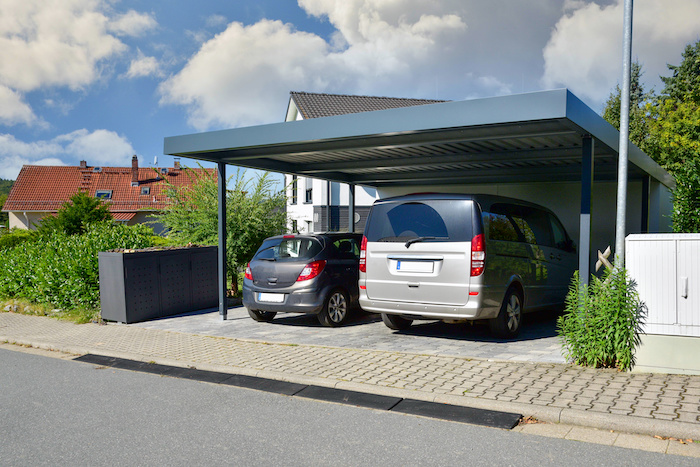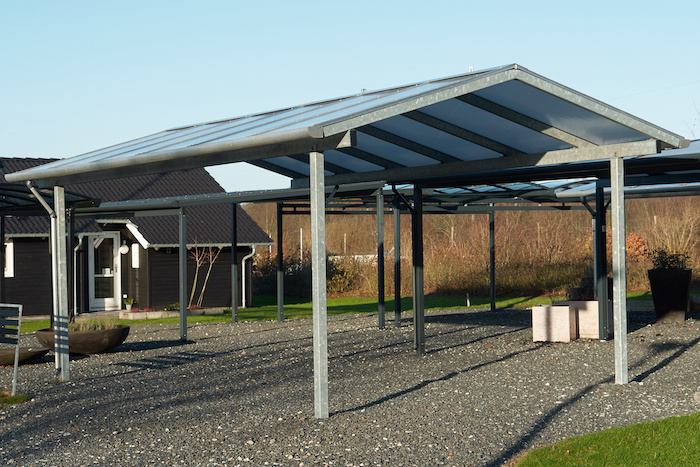
Owning a car is like having a baby because you want to take care of it with all you have and you don’t want something bad to happen to it. After all, it’s a significant investment and it’ll be your possession for a long time. Protecting it isn’t an afterthought—it’s a priority. And one of the most practical steps you can take is to install a metal carport. These sturdy structures shield your car from rain, snow, and UV rays, as well as add an appealing touch to your driveway.
Defining Metal Carports
A metal carport is a freestanding structure designed to protect vehicles, boats, or other outdoor equipment from the elements. Unlike traditional garages, which are typically enclosed and attached to a building, these metal buildings installed are open-sided and can be put independently in a driveway, backyard, or any suitable outdoor space.
These versatile structures are typically constructed using a sturdy metal frame, often made of galvanized or powder-coated steel, aluminum, or a combination of materials. The frame supports a durable metal roof, which can be flat or pitched, depending on the desired style and local weather conditions. Some metal carports also offer optional side panels or enclosures, providing additional protection from wind, rain, and sun exposure.
Metal carports are relatively easy to install, making them a popular choice for homeowners and businesses seeking a cost-effective and practical solution for protecting their vehicles or outdoor equipment. You can even ask for assistance from a metal carport builder where you bought your materials.
Understanding the Benefits of Metal Carports
Metal carports are incredibly durable and long-lasting. Unlike their wooden counterparts, metal carports are resistant to rot, insects, and weathering, ensuring they maintain their structural integrity for years to come.
Additionally, metal carports are low-maintenance and easy to clean. A simple wash with a hose or a quick wipe-down is often all it takes to keep them looking pristine. They’re also customizable, allowing you to choose from various sizes, styles, and colors to complement the aesthetics of your property. Moreover, metal carports can provide additional storage space for outdoor equipment, tools, or even a workshop area, making them a versatile addition to any property.

Preparing the Site
The first step in installing a metal carport is to prepare the site. Choose a level area in your driveway or backyard that can accommodate the desired size of the carport. Measure the space carefully and ensure there are no obstructions such as trees or power lines that could interfere with the installation process.
Once you’ve identified the perfect spot, it’s time to lay the foundation. Metal carports typically require a solid base such as a concrete pad or paving stones to ensure stability and prevent shifting or sinking over time. If you’re handy with concrete work, you can pour the pad yourself; otherwise, consider hiring a professional contractor to handle this crucial step. Proper site preparation is essential for the long-term durability and structural integrity of your metal carport.
Gathering the Necessary Tools and Materials
Before you begin the installation, make sure you have all the necessary tools and materials on hand. The specific requirements may vary depending on the manufacturer and the size of the carport. But generally, you’ll need:
- The metal carport kit, including the frame, roof panels, and hardware
- A level and tape measure
- A power drill and appropriate drill bits
- Wrenches and sockets (sizes will depend on the hardware)
- Safety gear, such as gloves and eye protection
- A step ladder or scaffolding (if needed)
Additionally, it’s a good idea to have a friend or family member assist you during the installation process, as some components can be heavy and awkward to handle alone. Having an extra set of hands can make the installation process smoother and safer.
Maintenance and Care
While metal carports are low-maintenance, they still require some care to ensure their longevity and optimal performance. Regular inspections are recommended to check for any loose hardware, rust spots, or damage caused by severe weather. Addressing any issues promptly can prevent further deterioration and extend the lifespan of your carport.
Additionally, it’s a good idea to clean your metal carport periodically. A gentle soap and water solution, along with a soft-bristle brush, can effectively remove dirt, debris, and any built-up grime.
Conclusion
Knowing how to install a metal carport in your driveway is a practical and cost-effective way to safeguard your vehicle from the elements. Remember, proper preparation, attention to detail, and regular maintenance are keys to ensuring your metal carport serves you well for years to come.
